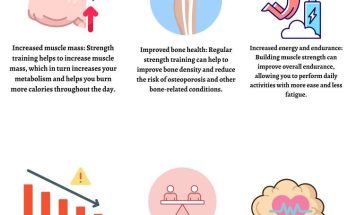Mindfulness practices for stress reduction and increased focus can be incredibly effective. Stress can be frustrating and no one loves getting stressed. Stress can make you lose focus and get easily distracted from whatever you are doing.
Are you easily stressed and looking for a stress management technique? Then this is a blog post you should read. While there are several stress management techniques, we would, however, look at mindfulness practices that would enable reduced stress and increased focus.
Becoming more present and aware of your thoughts, feelings, and surroundings, can help you train your brain to be more focused and less overwhelmed. In this blog post, we’ll explore a variety of mindfulness practices, including mindful walking, focused breathing, and the Pomodoro technique. We will see how each of these practices can help to reduce stress and increase your ability to focus.

Benefits of mindfulness practices
There are many benefits of practicing mindfulness, both physical and mental benefits. Some of them include.
- Mindfulness practices are a great technique for reducing stress and anxiety.
- Mindfulness practices such as mindful walking are a great way to Increase focus and concentration.
- Mindfulness practices work magic on your mood which in turn boosts and Improves sleep quality.
- Mindfulness practices enhance self-awareness and self-acceptance. It works on you.
- Mindfulness practices Improve immune function. It has a healthy benefit on your body system which in turn helps to keep your immune function.
- Mindfulness practices reduce the risk of burnout.

How to practice mindfulness
There are many ways to practice mindfulness meditation, but a common approach is to focus on your breathing. Here’s a basic mindfulness breathing exercise you can try.
- Find a comfortable seated position and close your eyes.
- Bring your awareness to your breath and focus on the sensation of the air entering and leaving your body.
- If you find your mind wandering, simply return your attention to your breath.
- Continue this practice for 5-10 minutes or longer.

Mindfulness practices for reducing stress
There are a few mindfulness practices for reducing stress and they include.
- The 5-4-3-2-1 technique: This is an easy one and all you have to do is, Notice and name 5 things you can see, 4 things you can touch, 3 things you can hear, 2 things you can smell, and 1 thing you can taste. This practice helps you become more aware of your surroundings and focuses your five senses on the present moment.
- Body scan meditation: This is a mindfulness practice that allows you to focus on each part of your body, one at a time. It is a way to tune your body sensation to feel every ache, tension, and tightness. To practice: Slowly bring your awareness to each part of your body, starting from your head and working your way down to your toes. Notice any sensations without judgment.
- Progressive muscle relaxation: This is another technique that aids in relaxing the body and mind. It involves tensing and relaxing the muscle groups, one at a time. This helps to release any tension in your muscles. To practice: Tense and then relax each muscle group, one at a time.
- Mindful eating: Mindful eating meditation is the practice of eating slowly and paying attention to all the sensations of the food including taste and texture. It teaches you to focus on the present moment and savor it. To practice: Eat slowly and savor each sensation associated with the food.
- Gratitude practice: This is a mindfulness practice that allows you to reflect on the things you are grateful for. It could take different forms such as writing in journals, saying a prayer of gratitude, or just thinking of what you are grateful for. It takes your mind away from negative thoughts. To practice: Think of 3 things you’re grateful for each day.
- Positive self-talk: Positive self-talk involves speaking or affirming positive words to yourself. You could do this by writing your affirmations, using positive words as a mantra, or simply turning negative thoughts into positive ones. It gives your self-esteem a boost and a sense of empowerment. To practice: Affirm to yourself that you’re doing your best and that you are enough.
- Self-compassion practice: This practice involves being kind and understanding to yourself. Let go of perfectionism, stop being critical and judgemental to yourself, and take a break. This would increase your feelings of self-worth and deal with the negative feelings of shame and self-loathing. To practice: Be kind and compassionate towards yourself, especially when you make mistakes. Take a break instead.

Mindfulness practices for increasing focus
Here are a few mindfulness practices that can help you improve your focus.
- Mindful walking: This is a mindfulness practice that involves focusing on the experience of walking. It could be focusing on the rhythm of your breathing, the sensations of your feet, or the sights and sounds around you. It helps you stay focused, away from distracting thoughts. To practice: Pay close attention to your feet as you walk, noticing each step and the sensations in your body as you move.
- Focused breathing: This is a technique that involves focusing on your breathing and using it as an anchor to bring yourself to the moment. By focusing your breathing, you can quiet the mind and increase your ability to focus. To practice: Focus all of your attention on your breath, noticing each inhale and exhale.
- Single-tasking: This is a practice that involves giving your full attention to one thing and focusing on that until you are done. It is also known as monotasking and is quite the opposite of multitasking. It helps improve your focus and concentration. To practice: Turn off your phone or notifications, Give your full attention to one task at a time, avoiding multitasking. You can also set a timer to stay focused.
- The Pomodoro technique: This technique is a time management method. This is one great way to increase your focus because it gives you time to focus on one task without distractions. To practice: Set a timer and work for 25 minutes, then take a short break. Repeat this cycle a few times, then take a longer break.
- Mindful listening: This is a practice that involves you giving full attention to anyone speaking without letting your mind wander or think of your response. It helps you listen and absorb what the other person is saying without distraction. It could take the forms of using open body language, repeating what the other person has said, or making eye contact. To practice: Pay close attention to the words, tone, and body language of the person you’re listening to.
Conclusion
It is important to practice mindfulness on a daily basis. It can help you reduce stress and anxiety and Increase focus and concentration. The ability to manage stress and stay focused is something everyone should work on. Mindfulness practices for stress reduction and increased focus is that blog post that holds your hands through the process.
While practicing, it is important to remember that mindfulness is a practice, not a goal. Pract8ce daily even if you practice for a few minutes.
Was this helpful?
Drop a comment.



